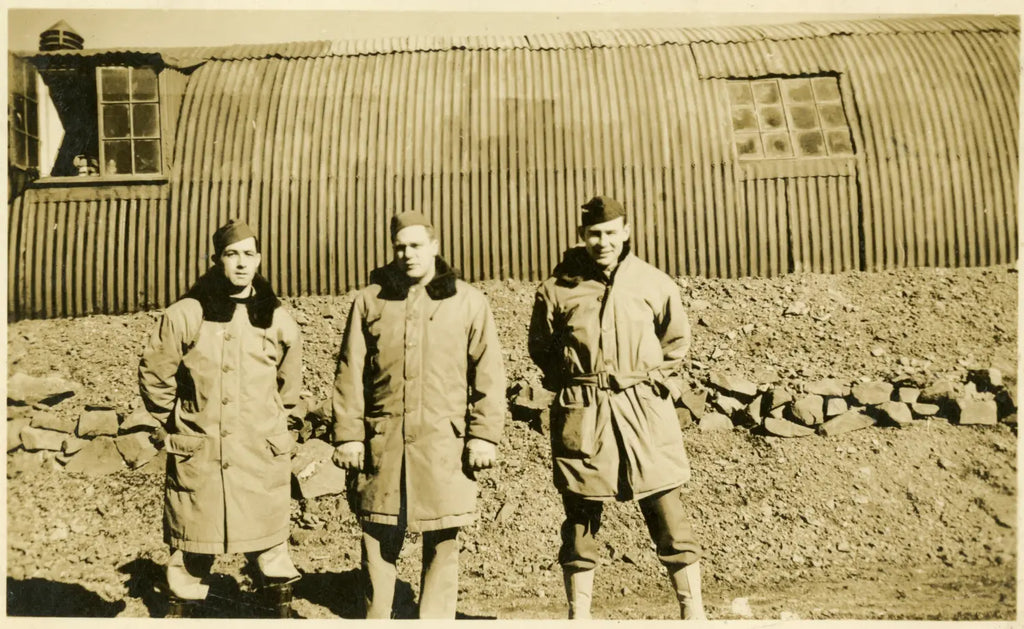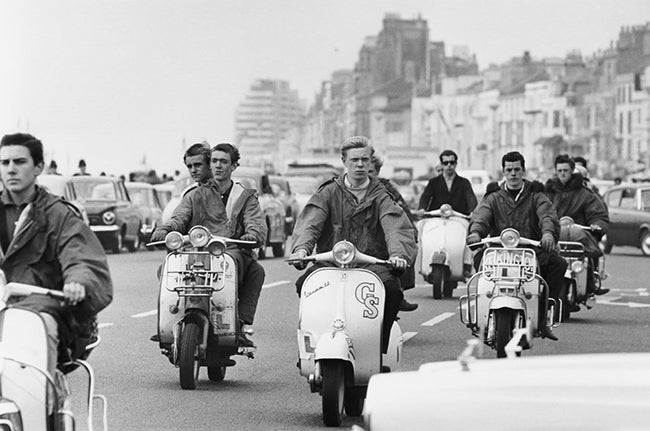実用的なアウターウェアの定番であるパーカは、深い歴史を持つコートです。過酷な気候の中で生まれ、軍隊に採用され、カウンターカルチャーに受け入れられ、そして今、時代を超えたスタイルを備えた現代のユーティリティアイテムとして再解釈されています。機能性を重視して作られながらも、洗練された服の世界で揺るぎない地位を築いている、稀有な存在です。
骨まで冷たくなったコート
パーカの歴史は北極圏に遡ります。もともとはカナダ北部の極限の生活に耐えるためにカリブー・イヌイットによって考案されたもので、初期のものはカリブーやアザラシの皮で作られ、風雪から守る天然の防水バリアとして魚油でコーティングされることがよくありました。「パーカ」という名称自体は、シベリアのネネツ族の言葉に由来すると考えられており、「動物の皮」という意味です。
初期のパーカは、単なる衣服ではなく、生き残るための必需品でした。厚手で断熱性が高く、フード付きで、まさに必要性から生まれたデザインで、細部に至るまでニーズに応えています。その機能性は、今日でもパーカのアイデンティティの中心に据えられています。

出典: バンクーバー海洋博物館 - レナード・マッキャン・アーカイブ // イヌイットの女性
ミリタリースタンダード、モッドステープル
20世紀半ばまでに、パーカーは世界中の軍隊で採用されました。 U.S陸軍は寒冷地に駐留する部隊向けに、特に朝鮮戦争中にM-51「フィッシュテール」パーカを初導入しました。この時、今や象徴的なM-51パーカが初めて登場しました。後ろ裾が長く、脚に巻いて保温性を高めることができ、オーバーサイズのフィット感はかさばる制服の上からでも楽に羽織ることができました。毛皮の裏地付きフードと多数のフロントポケットが、さらに実用性を高めました。

出典: 国立第二次世界大戦博物館 // レイキャビクの米兵、1943年
しかし、実用的なデザインではよくあることですが、機能から始まったものはファッションで終わることがよくあります。
戦後、軍放出のパーカは新たな顧客層を獲得しました。それはイギリスのモッズです。スタイリッシュでスクーターに乗り、洗練された装いの彼らは、迷彩ではなく防護服としてパーカを羽織りました。仕立ての良いスーツの上に羽織り、移動中でも清潔さを保っていました。バッジやワッペンでカスタマイズされ、パーカはサブカルチャーの象徴となりました。1979年には「クアドロフェニア」によってその地位を確固たるものにし、90年代にはブリットポップによって再び復活しました。そして今日でも、パーカは動き、エネルギー、そして独立の代名詞であり続けています。

出典: 不明 // ブライトンビーチのモッズ、1964年
グローバーオールのモダンなパーカー
グローバーオールのパーカは、その伝統を忠実に守りつつ、現代的なディテールに磨きをかけています。テクニカルな性能と時代を超越したデザインが融合し、何シーズンも愛用できるアウターウェアです。
コールマン パーカー
第二次世界大戦のパイロットのために開発された、しっかりと織られた天然の耐水性生地であるベンタイル®コットンで作られた コールマン パーカー 機能性の洗練さが光る一着。軽量ながらも耐久性に優れ、変わりやすい天候やスケジュールにもスムーズに対応します。
ゆったりとしたフードとストームフラップが悪天候からコートを守り、4つのゆったりとしたフロントポケットは、このコートの実用性に根ざしています。内側には通気性のあるバギーライニングが施され、重ね着しても快適な着心地を保ちます。空の概念を塗り替えた先駆的な飛行士、ベッシー・コールマンにちなんで名付けられたこのコートは、自信、冒険、そして備えの大切さを静かに体現するアイテムです。

同じくベンタイル®から切り出された スタンレー・パーカー 定番スタイルに、より構造的なシルエットをプラス。イギリスの探検家でありジャーナリストでもあったヘンリー・モートン・スタンレーに敬意を表して名付けられたこのジャケットは、洗練されたエッジを効かせながら、アウトドアの実用性を体現しています。
クラシックな襟は取り外し可能なフードにすっきりと収まり、ラグランスリーブは動きやすさを提供します。大きなベローズポケットと隠し内ポケットは必需品を手元に置いておけます。街を歩くのにスマートでありながら、週末の散歩にも耐える頑丈さを備え、あらゆる天候に対応できる設計です。






